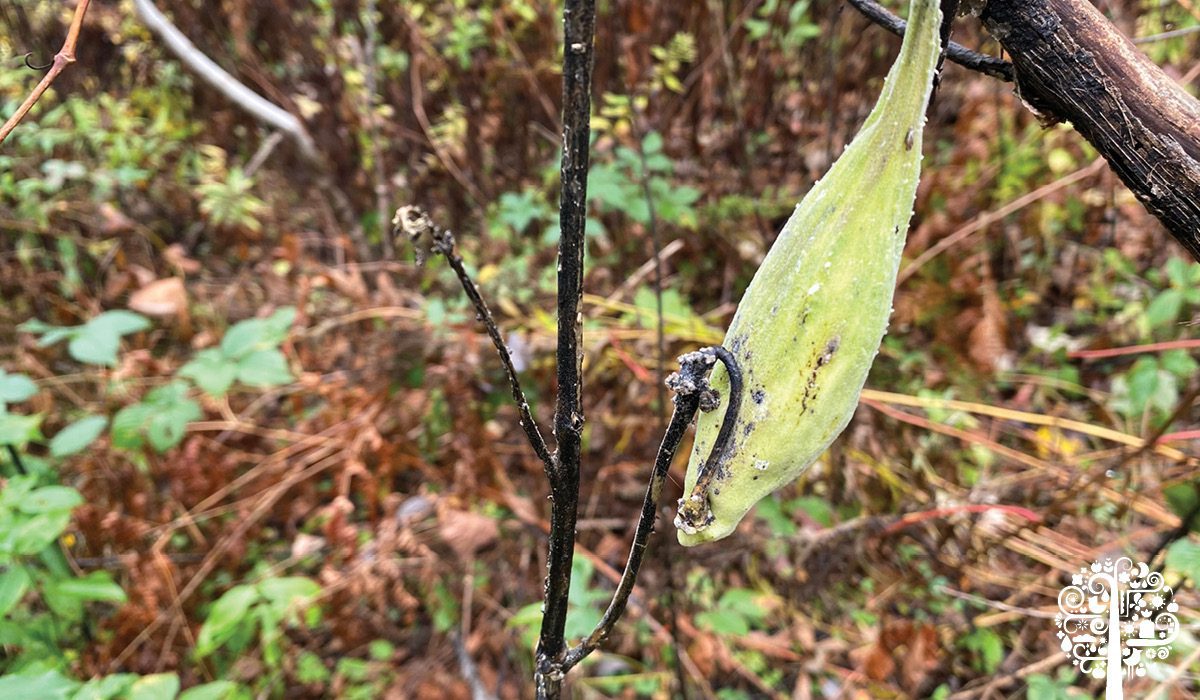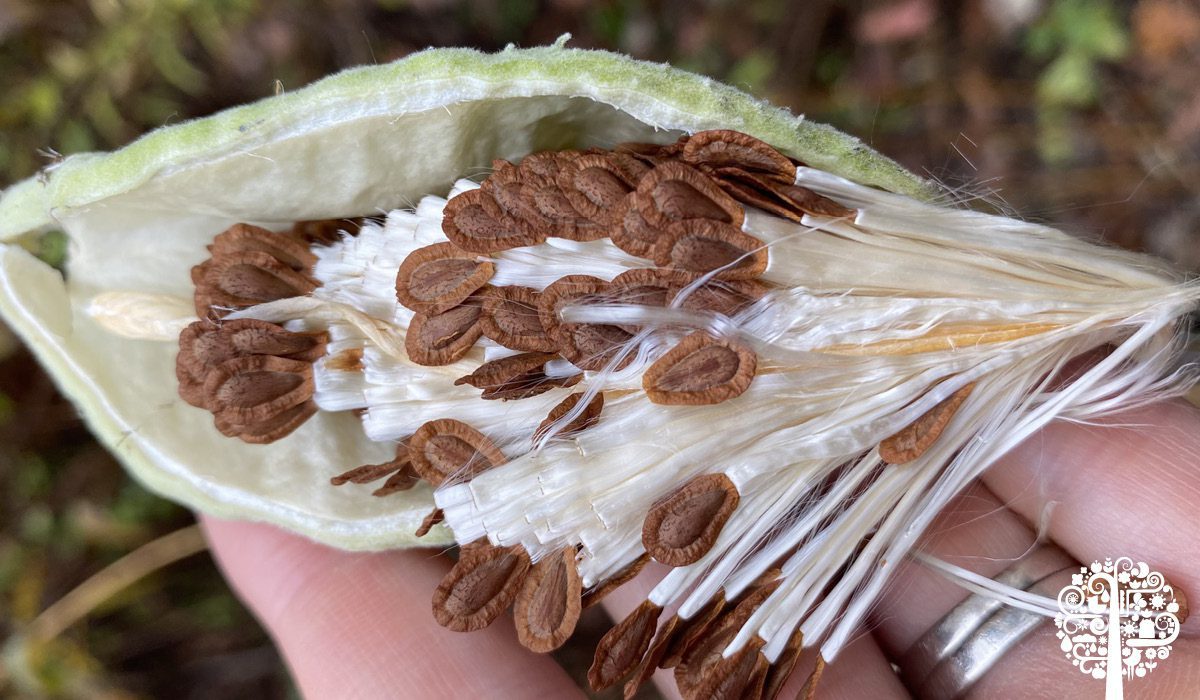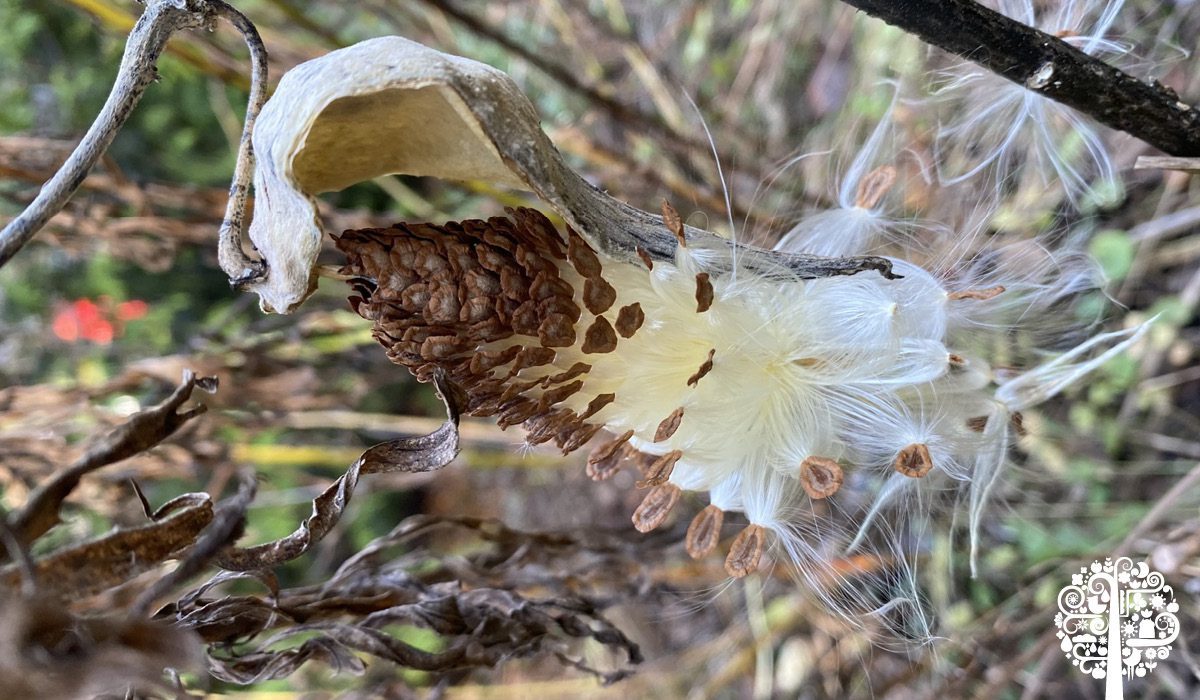When I was a kid, I loved opening milkweed seed pods, separating the silky white fibers, and watching them float through the air. I thought it was fun; little did I know I was helping milkweed propagate! Today, it’s more important than ever to save and spread milkweed seeds. Although humble in appearance, milkweed is a precious food source for monarch butterflies, essential pollinators facing extinction.
Humble Hero
Milkweed has long been despised by gardeners and farmers alike. The plant’s deep roots and invasive properties mean it can quickly overtake crops growing nearby. It’s also toxic if eaten by pets and livestock in large quantities.
But in recent years, milkweed has transformed into the unsung hero. The weed’s fragrant flowers attract many beneficial insects to the garden all summer long. And it turns out monarch butterflies can’t live without milkweed; the caterpillars need it for food, and the butterflies use the foliage to lay their eggs!

With monarch populations rapidly depleting, organizations and various pollinator-friendly initiatives beg gardeners to include milkweed in their landscapes.
So if you ever come across a patch somewhere on a roadside, grab a pod and save some of the seeds; it’s easy!
When To Harvest
Milkweed pods are ready to harvest off the plant throughout October and early November. You’ll know the pod is ready when it begins to dry and split down the middle, exposing some of the white fibers inside.

If left on the plant, the pods will open up themselves, and the seeds will spread with the help of the wind. It’s good to let nature do its work, but don’t be shy to pick a few pods and spread or harvest the seeds yourself!
Note that mature milkweed seeds are brown; any other color and they’re not ready yet.
How To Harvest
Harvesting milkweed seeds couldn’t be easier. All you have to do is open the pod and gently pull out the white fibers.
Holding the fibers together, run your fingers down to the brown seeds and pull them loose. And that’s how you harvest milkweed seeds. I told you it was easy.

What To Do With The Seeds?
You can either scatter and sow the seeds right away for natural stratification or store them in the fridge for the winter.
If you’re storing the seeds, make sure they’re completely dry before putting them in a container. For best results, dry them on a screen.
Seed Starting
You can start milkweed seeds indoors 10-12 weeks before your region’s last frost date. Germination is slow; don’t be surprised if the seeds take up to 21 days to sprout.

Start the seeds in biodegradable pots to not disturb their temperamental roots during transplant, and space the seedlings about 24″ apart.
If stored properly in the fridge, milkweed seeds should be viable for up to three years!
For more seed-saving advice, check out Starting & Saving Seeds: Grow The Perfect Vegetables, Fruits, Herbs, And Flowers For Your Garden by Julie Thompson-Adolf.